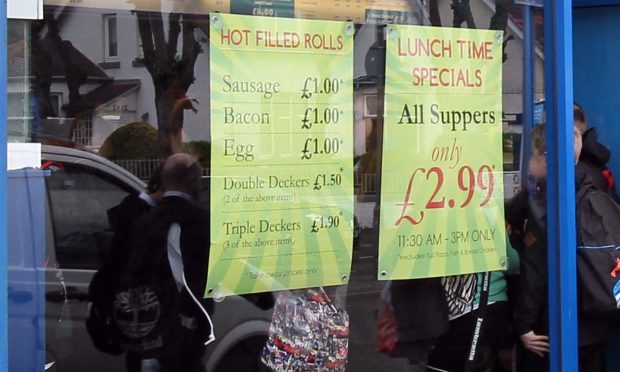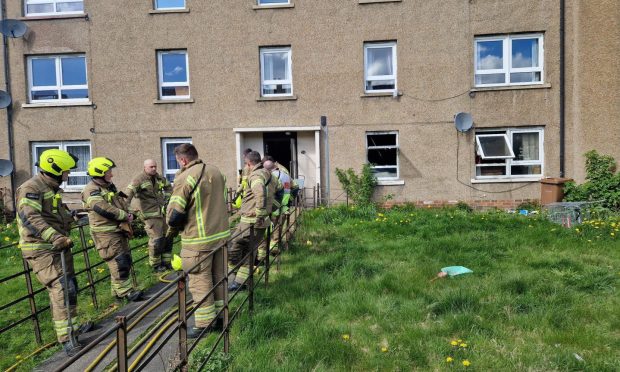Stark new figures show the risk of young Scots becoming obese or overweight is at its highest since records began. The Courier investigates…
Scotland’s major cities have the equivalent of one takeaway for each secondary school class, according to an analysis by The Courier.
Dundee has the one of the highest concentrations of the fast food outlets in the country amid a rise in their numbers across Tayside and Fife.
There are 193 takeaways in the city, which amounts to one for every 37 of its secondary pupils.
Only Glasgow (30 pupils per takeaway) and Edinburgh (27), which each cater for millions of visitors a year, have higher rates.
The prevalence of the takeaways, which are often high in fat and cluster in more deprived areas, has been identified as a significant hurdle to tackling the obesity scourge.
It has led to calls from Cambridge researchers from The Centre for Diet and Activity Research for councils to “think hard about restrictions on the number and location of outlets in a given area, particularly deprived areas”.
Across, Tayside and Fife there are 714 takeaways.
There has been a 13% increase in the number takeaways across Angus, Fife and Perth & Kinross from 471 to 531 between 2013/14 and the present day, according to freedom of information figures obtained by The Courier.
That data does not include Dundee, which could not provide full lists of historic takeaway numbers.
Alistair Montgomery, a former Dundee GP, said: “I live not far from The Harris and you see what the children are eating at lunchtime.
“It’s obvious that a significant portion are not eating at the school and they are all going down the Perth Road and buying what you might describe as junk food.
“It’s not what you want the children to be eating. It’s a hugely complex problem and how you would crack that on I do not know.”
Takeaways are defined by CEDAR as food outlets where hot food is ordered and paid for at the till, with no waiter service and limited or no sit-in option.
The category includes bakeries, such as Greggs, as well as well-known brands more obviously associated with fast food, such as KFC and McDonald’s, and local independent takeaways.
Barking and Dagenham Borough Council was the first in the UK to introduce strict planning rules to cap takeaway numbers, which banned them from being near schools, stopped them clustering in certain place and forced them to pay levy to go towards fighting obesity.
There appears to be little appetite for Dundee City Council to take such a hard-line approach.
A spokesman said: “Proposals for hot food takeaways raise a number of planning concerns.
“These require to be carefully considered by the council in order to strike an appropriate balance between the demands for such facilities, their economic impact and potential amenity concerns.”










